Dwelling-brewed biofuels can run a tractor, pickup truck, or automotive. Uncover strategies to make biofuel at dwelling, together with how masses land you’ll want for rising biofuel crops.
I moved to Missoula in December 2006 to enter the environmental evaluation graduate program at The College of Montana. There I discovered an brisk neighborhood motivated by the need for self-sufficiency. I quickly was launched to the folks and actions at one amongst many native hubs of sustainability, the Program in Ecological Agriculture and Society (PEAS) farm.
The PEAS farm is managed collaboratively by the College and the nonprofit Yard Metropolis Harvest. The farm is run by pupil interns, volunteers, and a director from the environmental evaluation program. The nine-acre farm emphasizes sustainability and offers an opportunity to contribute to the native meals pantry. On an annual foundation, the farm offers 20,000 kilos of greens to the meals financial institution and 80 Group Supported Agriculture (CSA) members who pay an annual “subscription” to accumulate a weekly share of the produce all by way of the season.
Initially, my curiosity was piqued by the farm’s contemplate selling native meals strategies. Along with planting, weeding, and harvesting greens, I constructed fences, planted timber, mounted sprinklers, moved rocks, and fed livestock. The extra concerned I turned, the extra I seen that each side of the farm associated to my graduate work lastly. Over time, my curiosity in sustainable gas sources and making biodiesel has grown.
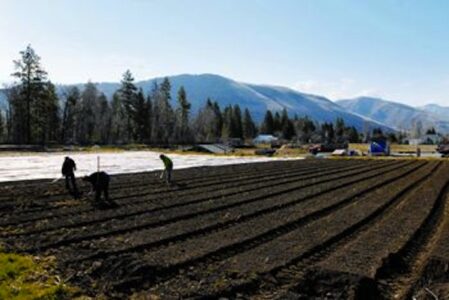
With a imaginative and prescient of serving to others purchase larger self-sufficiency, PEAS college faculty college students have began a evaluation to look at the viability of working a tractor on vegetable oil produced on the farm. We hope the advantages of working a tractor on vegetable oil will assist small-scale farmers purchase self-reliance, broaden their markets for oilseed crops, and reduce their environmental footprint.
Biodiesel or Straight Vegetable Oil?
Contained in the Nineties Rudolf Diesel designed the distinctive diesel engine to run on vegetable oil, however trendy diesel engines are speculated to run on petroleum diesel. For these all for making biodiesel for diesel engines, the world of biofuels affords two selections: biodiesel or vegetable oil. Utilizing biodiesel requires modifications to the vegetable oil itself; utilizing straight vegetable oil requires modifications to the diesel engine.
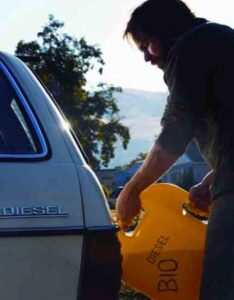
Each biofuels have execs and cons, plus refined nuances to their use and manufacturing. Nonetheless for these with sufficient endurance and enthusiasm to embrace biodiesel or veggie oil gas, the rewards will most likely be good.
For starters, straight vegetable oil is just too thick to burn in an odd diesel engine. In cool native climate, it turns into thick as butter, clogging gas strains and injectors. Nonetheless a diesel automotive will most likely be modified to run on straight vegetable oil by way of the utilization of every a dual-tank or single-tank gas system.
The twin-tank system requires one tank for diesel and one totally different for vegetable oil — plus a system to alter from one gas to the choice. The engine begins on diesel gas, however switches to run on vegetable oil after warmth produced by the engine warms the vegetable oil to about 160 ranges Fahrenheit. Prior to shutting off the automotive, diesel gas is cycled via the gas strains to purge the system of vegetable oil. (For extra info, see Would you employ Veggie Oil to Gasoline Your Automotive?) On account of diesel gas is required for beginning the automotive and clearing the strains ahead of shutdown, a dual-tank system is healthier suited to autos that run for prolonged intervals or distances.
A single-tank system preheats the vegetable oil utilizing electrical warmth (plus the extra warmth produced by the engine when it’s working) and makes use of modified injectors and glow plugs which can be optimally suited to ignite and combust vegetable oil. (New diesel engines have precise gas necessities that ought to match the chemistry of the oil, however older engines have a greater tolerance for an enlargement of vegetable oils.)
Contemplating the frequent start-and-stop nature of our small-farm work, we determined a single-tank system would be the acceptable option to run vegetable oil in our tractor.
Gasoline for the Farm
Thanks partially to a grant from the Nationwide Coronary coronary heart for Acceptable Know-how, a company that promotes utilized sciences that defend vitality and sources, we have now retrofitted a Kubota tractor with an Elsbett single tank gas system to run on straight vegetable oil produced in jap Montana. (Elsbett is a German company that manufactures conversion kits and engines designed to run on straight vegetable oil.) The effectivity of this tractor is being measured and in distinction with the effectivity of two related tractors used on comparable farms shut by. Truly one amongst these tractors makes use of a biodiesel mix; the choice makes use of petrodiesel.
If we affirm {{{that a}}} single-tank system is a viable probability for working a tractor on straight vegetable oil, we plan to develop an oilseed crop and produce our non-public gas. We estimate we’ll ought to commit about 5% of our cropland to oilseed (presumably canola) manufacturing yearly to produce sufficient oil to vitality the tractors. Others estimate it’d require as rather a lot as 30 % of a farm’s land to supply sufficient gas to make a farm self-sufficient.
Easy methods to Make Biofuel at Dwelling
The PEAS farm furthermore homes a biodiesel processor to transform used cooking oil to biodiesel for the Yard Metropolis Harvest tractor (and initially for our Kubota). The flexibleness offers a protected location for college faculty college students to make biodiesel and retailer the provides used all through the course of. Since its arrival on the farm, fairly just a few college faculty college students (together with me) have taken benefit of this handy helpful useful resource to supply gas for his or her very private autos.
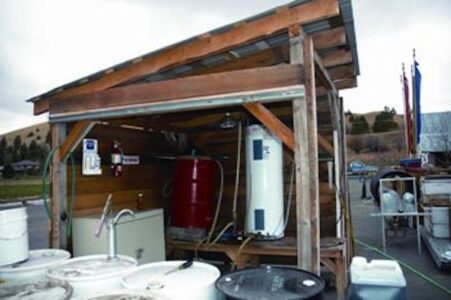
Final summer time season season, I participated in my first biodiesel experiment. It was intimidating, however the course of was comparatively easy. Primarily, biodiesel is produced by a chemical response involving vegetable oil, methanol, and potassium hydroxide or one totally different catalyst. Glycerol is a byproduct of the tactic.
Step 1
We took 20 gallons of used fryer oil (from an house restaurant), strained out the meals particles, and pumped the oil via a gaggle of braided hoses and copper valves correct proper right into a recycled water heater. On account of the oil cycled via the processor, we took a pattern and examined it to hunt out out the quantity of potassium hydroxide we might want so as in order so as to add to the used oil.
Step 2
We added the required ratio of methanol to the potassium hydroxide. When the processor launched the oil temperature to 130 ranges, we added the chemical compounds to the processor and allowed it to cycle for 2 hours. The chemical compounds and warmth remodeled the used oil into biodiesel. When the response was full, we unplugged the processor.
Step 3
On account of the oil cooled in a single day, a dense layer of glycerol settled to the underside of the tank. The following morning we drained off the glycerol, which accommodates methanol and completely totally different contaminants that must be eradicated earlier to composting. (Some folks use it to make cleaning cleansing cleaning soap after it’s detoxified.)
Step 4
The last word stage of the tactic was to change the biodiesel to a separate barrel to “wash” it. The washing course of is completed by making use of a light-weight mist of water to the very best of the biodiesel. The suspended impurities all through the biodiesel adhere to the water drops as they percolate to the underside and are drained from the tank. At this stage, the home-brewed biodiesel is able to use in any diesel engine. From 20 gallons of used fryer oil, we produced 16 gallons of biodiesel.
Gasoline fine quality components from incomplete reactions normally could set off factors with home-brewed biodiesel. On the PEAS farm, the tactic of brewing fine quality biodiesel has developed via trial and error. As a result of cautious consideration of our home-brewers, we have not skilled any fuel-related factors utilizing biodiesel produced on the farm.
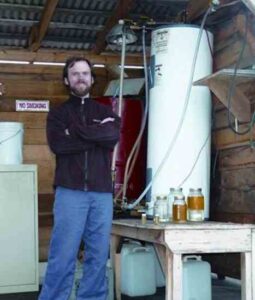
Biofuels: Execs and Cons
Execs
- Biodiesel combustion emits rather a lot a lot much less carbon monoxide, carbon dioxide, and hydrocarbons than combustion of an identical quantity of petrodiesel. (The U.S. Environmental Safety Agency beforehand talked about that nitrogen oxide emissions from biodiesel have been larger than from petrodiesel, however that analysis is being re-examined.)
- For many, there’s an financial attraction to creating biodiesel. Making biodiesel for just a few buck per gallon or rather a lot a lot much less was comparatively straightforward for us. Using salvaged offers, the biodiesel processor on the PEAS farm was put collectively for about $150. Native consuming areas give away used vegetable oil, and methanol will most likely be bought for $4 per gallon.
- The worth of vegetable oil has risen considerably (an enormous concern for enterprise biodiesel producers). Nonetheless for these contemplating straight vegetable oil as a gas, new vegetable oil is just not the one probability. Many consuming areas offers you used vegetable oil, which should be fully filtered ahead of use — however it’s free.
Cons
- The draw again is the preliminary value of adjusting an engine. The Elsbett single-tank conversion package deal deal put in all through the farm tractor value $1,200 and is comparable in worth to completely totally different single-tank modifications. Twin-tank strategies value about $1,000, however require a bit further labor.
- The authorised components relating to make use of of veggie oil as a gas and residential manufacturing of biodiesel are refined and fluctuate from state to state. It’s good to register with the federal authorities and pay gas taxes (presumably state and federal) on the biodiesel you produce. Approved pointers regarding straight vegetable oil are altering, however it’s nonetheless technically not accepted to be used as gas by the EPA. And your state might require you to register to gather waste vegetable oil.
To this point, using straight vegetable oil has demonstrated promise as a gas different for our Kubota tractor. And I’m burning home-brewed biodiesel in my 1981 Mercedes diesel station wagon with none factors. At any time when doable, I journey my bike, stroll, or carpool. Nonetheless after I drive, I really actually really feel good understanding my automotive is engaged on recycled vegetable oil processed on the identical farm the place I elevate veggies.
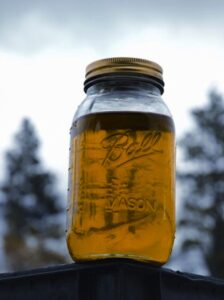
Do you have acquired sufficient land for meals and gas?
Once you wish to develop biofuels to run your tractors, what number of acres would not it is good to resolve to gas crops? This query was tackled all through the Sunshine Farm evaluation, carried out by The Land Institute in central Kansas from 1992 to 2001. Sunshine Farm is The Land Institute’s 160-acre pure analysis farm with 49 acres of cropland. Primarily based on measurements of gas use and crop yield, the researchers discovered that the farm would wish to utilize 30 % of its crop home to develop soybeans and sunflowers that may most likely be used to make biodiesel to run its 70-horsepower diesel tractor. To provide gas for the farm’s pickup truck would require one totally different 15 %.
It is a considerably pessimistic quantity, as bigger tractors pulling wider farm implements (which is probably shared amongst quite a few small farms) are further vitality setting nice — as rather a lot as about twice as setting nice. Furthermore, the farm’s truck bought solely about 13 miles to the gallon, so a further setting nice automotive would have an infinite have an effect on on gas use.
A farm’s tillage practices could make a limiteless distinction. The Sunshine Farm used typical tillage, which entails many passes with tractors and heavy devices. Gasoline utilization is probably diminished considerably by way of the utilization of diminished tillage methods that furthermore decrease soil loss, protect soil fine quality and reduce greenhouse gasoline emissions from the soil.
The environmental have an effect on of manufacturing biofuels regionally as a part of diversified, sustainable small farm operations is completely completely totally different from the mass manufacturing of biofuels. Oil crops produced on an infinite scale (paying homage to palm oil) are inflicting essential deforestation and contributing to worldwide warming. There are furthermore essential points surrounding using meals crops (corn and soybeans) to supply fuels.
